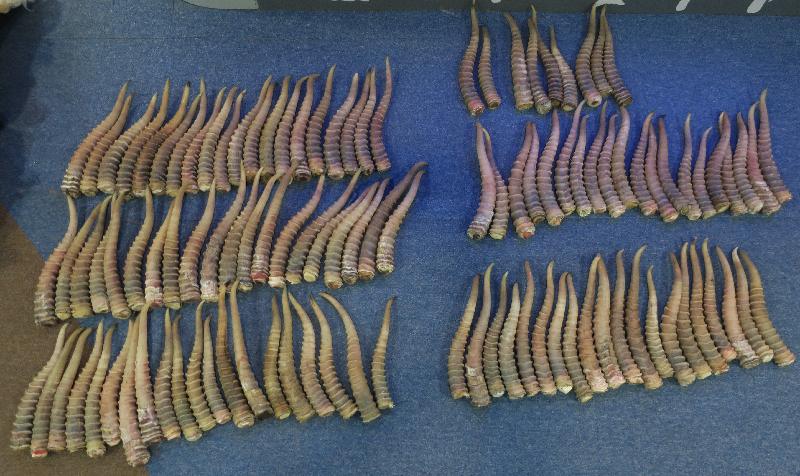The Centre for Health Protection (CHP) of the Department of Health has announced that as of 4pm today (June 3), no new local confirmed cases of coronavirus disease 2019 (COVID-19) had been recorded, and that the number of cases in Hong Kong remained at 1 094 so far (comprising 1 093 confirmed cases and one probable case).
The CHP has been proactively conducting epidemiological investigations and carrying out preventive control measures about the cluster in Lek Yuen Estate, Sha Tin. As of 4pm today, 1 056 deep throat saliva samples had been collected in Luk Chuen House, Lek Yuen Estate, among which 25 samples need to be collected again owing to leakage and the remaining 1 031 samples have had testing for COVID-19 completed. Except for the four confirmed cases announced yesterday (June 2) with positive results, other samples have tested negative.
The CHP has been taking the initiative to contact those residents in Luk Chuen House who have not yet returned their deep throat saliva samples for follow-up. A spokesman for the CHP said, "As of 5pm today, 66 units with relevant residents had not yet returned their samples. The CHP strongly appeals to and urges them to return their samples to the CHP as soon as possible for early testing. The CHP will arrange compulsory testing for those who do not return their samples."
Meanwhile, as of 4pm today, the CHP had collected and tested 1 726 samples for Luen Yuet House, Kwai Luen Estate, with no positive results.
The CHP again urged members of the public to maintain an appropriate social distance with other people as far as possible in their daily lives to minimise the risk of infection. In particular, they should go out less and avoid social activities such as meal gatherings or other gatherings to reduce the chance of contacting infected persons who may not present any symptoms, and minimise the risk of outbreak clusters emerging in the community.
The spokesman said, "Given that the situation of COVID-19 infection remains severe and that there is a continuous increase in the number of cases reported around the world, members of the public are strongly urged to avoid all non-essential travel outside Hong Kong.
"The CHP also strongly urges the public to maintain at all times strict personal and environmental hygiene, which is key to personal protection against infection and prevention of the spread of the disease in the community. On a personal level, members of the public should wear a surgical mask when having respiratory symptoms, taking public transport or staying in crowded places. They should also perform hand hygiene frequently, especially before touching the mouth, nose or eyes.
"As for household environmental hygiene, members of the public are advised to maintain drainage pipes properly, regularly pour water into drain outlets (U-traps) and cover all floor drain outlets when they are not in use. After using the toilet, they should put the toilet lid down before flushing to avoid spreading germs."
Moreover, the Government has launched the website "COVID-19 Thematic Website" (www.coronavirus.gov.hk) for announcing the latest updates on various news on COVID-19 infection and health advice to help the public understand the latest updates. Members of the public may also gain access to information via the COVID-19 WhatsApp Helpline launched by the Office of the Government Chief Information Officer. Simply by saving 9617 1823 in their phone contacts or clicking the link wa.me/85296171823?text=hi, they will be able to obtain information on COVID-19 as well as the "StayHomeSafe" mobile app and wristband via WhatsApp.
To prevent pneumonia and respiratory tract infection, members of the public should always maintain good personal and environmental hygiene. They are advised to:
• Wear a surgical mask when taking public transport or staying in crowded places. It is important to wear a mask properly, including performing hand hygiene before wearing and after removing a mask;
• Perform hand hygiene frequently, especially before touching the mouth, nose or eyes, after touching public installations such as handrails or doorknobs, or when hands are contaminated by respiratory secretions after coughing or sneezing;
• Maintain drainage pipes properly and regularly (about once a week) pour about half a litre of water into each drain outlet (U-trap) to ensure environmental hygiene;
• Cover all floor drain outlets when they are not in use;
• After using the toilet, put the toilet lid down before flushing to avoid spreading germs;
• Wash hands with liquid soap and water, and rub for at least 20 seconds. Then rinse with water and dry with a disposable paper towel. If hand washing facilities are not available, or when hands are not visibly soiled, performing hand hygiene with 70 to 80 per cent alcohol-based handrub is an effective alternative;
• Cover your mouth and nose with tissue paper when sneezing or coughing. Dispose of soiled tissues into a lidded rubbish bin, then wash hands thoroughly; and
• When having respiratory symptoms, wear a surgical mask, refrain from work or attending class at school, avoid going to crowded places and seek medical advice promptly.


